Slovak Food Dishes: Basic Overview
Common Ingredients
Common Cooking Methods
Courses
Meals
Key Taste
Eating Etiquette
Meal Presentation
Culinary Festivals
Influence and Fusion
Popular Types of Slovak Dishes
-
Cakes and pastries
Slovak cakes and pastries are often sweet and filled with a variety of flavors, like fruit, cheese, or nuts.
They’re made with ingredients like soft yeast dough and can come in shapes like crescents or rounds.
These treats are perfect for pairing with a cup of coffee or tea, making them a cozy choice for dessert or a snack.
-
Desserts
Slovak desserts are a mix of creamy, fruity, and sweet flavors.
They include rice-based dishes baked with milk and eggs, honey-spiced cookies, and meringue treats with creamy fillings.
Often served with a sprinkle of sugar or compote, these desserts are a hit with all age groups.
-
Soups
Slovak soups range from hearty bean soups with a sour-creamy taste to rich sauerkraut stews packed with meat and vegetables.
These soups can be a warm appetizer or a fulfilling main dish, usually enjoyed with bread or a dollop of butter for added richness.
-
Charcuterie and cheese boards
Slovak charcuterie and cheese boards feature a selection of meats like blood sausage and unique local cheeses with varying flavors and textures.
From smoked string cheese to creamy spreads, these boards showcase Slovakia’s rich culinary traditions in meat and dairy.
Slovak dishes are food offerings belonging to Slovakia, a Central European country officially known as the Slovak Republic. These dishes are a reflection of the country’s agricultural heritage and strategic position that has allowed the integration of various European culinary delights.
Slovak dishes share many similarities with neighboring countries, especially the specialities of the Czech Republic.
Historically, Slovak cuisine evolved from the need to produce food that could withstand the harsh climate, with a heavy reliance on wheat, potatoes, dairy products, and pork.
Traditional Slovak cooking methods were simple, favoring boiling and baking over frying and heavily spicing. Meals were often a communal affair, centered around the family and the seasons, with lunch traditionally being the main meal of the day.
Contemporary Slovak cuisine, while retaining its traditional base, has embraced a variety of spices, ingredients, and techniques. The cuisine is characterized by its simplicity and heartiness, offering a comforting glimpse into the Slovak way of life.
After knowing about the dishes coming from Slovakia, it’s best to discover the pairings of these fares with refreshing beverages.
35 Most Popular Slovak Dishes with Filters
When it comes to Slovak specialties, you should take a look at them through the filter system to check them out in alphabetical order, key ingredients, tastes, dish types, cooking methods, and global popularity.
Furthermore, check out the most popular, national, traditional, street food, and fusion dishes of Slovakia to understand this country’s cuisine.
Bryndzové Halušky
- National
- Traditional
Bryndzové halušky are potato dumplings with sheep cheese (also known as ‘bryndza’) filling. These dumplings are a national dish of Slovakia, boasting a touch of creaminess.
Customarily, you can add some smoked bacon bits to add extra texture and flavor. You will find this dish everywhere in Slovakian territory, from the fancy restaurants in the city to the rustic houses in the village.
When served, these dumplings are ideal for having with Žinčica, a drink made using sheep milk whey. To add to that, Slovakia even has a festival dedicated to the dish in Turecká, mainly focusing on an eating contest.
Pierogi
- National
- Traditional
Pierogi, or pirohy, are national dumplings of Slovakia made of unleavened dough filled with various ingredients and cooked in boiling water.
The Slovak version of pierogi is called bryndzové pirohy, which is filled with bryndza, a type of sheep cheese. They are usually served with sour cream, fried bacon bits, and polenta.
These little soft dumplings can have a savory or sweet filling with cheese, potatoes, sauerkraut, or even fruits as fillings. Furthermore, these dumplings come with a semicircular shape.
Parené Buchty
- Traditional
Parené buchty is a Slovak dessert, consisting of steamed dumplings filled with jam, sweetened poppy seeds, or curd. Made from a soft yeast dough, these fluffy, pillow-like treats are traditionally steamed to perfection.
Locals often serve the treat with a dusting of powdered sugar, melted butter, or a side of sweet sauce. Its simplicity and the delight of biting into a sweet, steamy dumpling make it a favorite among all ages.
Fašírka
- Street Food
Fašírka, or frikadelle (a more prominent name), are delicious hamburgers with flat-fried meatballs well-known for their versions in Danish cuisine.
In Slovakia, people savor fašírka with two soft bread slides with the additions of sliced onion, red pepper, and mustard.
This tasty fried dish can also be served with mashed potatoes or cabbage to enhance the entire dish’s flavor.
Pagach
- Traditional
Pagach (or pagac), also known as belish, is a dish commonly served in Slovakia or Ukraine. The dish is a flatbread with a meatless filling like potato or cabbage.
Since pagach has a flat appearance, many people call it a Slovakian version of pizza. After being baked, the flatbread will slightly rise, forming a dense and soft body.
Fazuľová Polievka
- Traditional
Fazuľová polievka is a Slovak bean soup, renowned for its exquisite blend of sour and creamy flavors. This beloved dish is also popular in countries like the Czech Republic, Romania, and Hungary, serving splendidly as either an appetizer or a hearty main course.
The dish is often enjoyed with crusty bread or a dollop of butter. At its core, the beans have a rich nutty essence and nutritional benefits.
The use of fazuľa beans, a variety native to Slovakia, lends this traditional soup its distinctiveness.
Segedínsky Guláš
- Traditional
Segedínsky guláš, also known across Central Europe by names like “székelykáposzta,” “székely goulash,” is a stew in Slovakia coming from Hungarian cuisine. The specialty is all about creating a thick mixture using pork sauerkraut, tomatoes, broth, bread, and sour cream
Intriguingly, the dish does not trace its origins to the Székely people or traditional Transylvanian culinary practices. Traditionally, segedínsky guláš is heartily served with bread-like dumplings, complemented by kadarka wine, cold sour cream, and chili pepper cream, offering a rich blend of flavors and textures.
Liptauer
- Traditional
Liptauer is a savory cheese spread from Liptov, a region in northern Slovakia, known for its bold flavors. Crafted from sheep milk cheese and quark, it’s enriched with chives, paprika, and occasionally, sour cream, butter, onions, beer, mustard, Worcestershire sauce, capers, and anchovy paste.
This spread is a common pick across Slovakia, Hungary, and Austria. Traditionally served on rye bread or pumpernickel toast, liptauer also pairs well with crackers as an appetizer, complemented by beer or wine.
It’s equally delightful as a filling for cold dishes, such as stuffed vegetables or hard-boiled eggs.
Ryžový Nákyp
- Traditional
Ryžový nákyp is a Slovak dessert of rice, milk, eggs, butter, and occasionally raisins, all baked together in a casserole dish. This traditional sweet treat is often served with fruit compote, a sprinkle of sugar, or a light egg white foam.
Celebrated in both Czech and Slovak cuisine, ryžový nákyp stands out for its thick, dense, and slightly crumbly texture, distinct from other rice puddings. Its versatility allows for the addition of various layers, infusing the dish with a rich, fruity flavor.
Kapuśniak
- Traditional
Kapuśniak, also known as kapustnica in Slovakia, is a sauerkraut soup that offers a rich, savory experience. The beauty of Kapuśniak lies in its variability, as there’s no fixed recipe for this dish.
As an essential Christmas dish in Slovakia, the soup’s delightful sweet broth emerges from a lengthy simmering of sauerkraut with flavors deepened by the addition of ham hocks or a ham bone.
Bryndza
- Traditional
Bryndza is a Slovakian cheese renowned for its robust flavor and dazzling white or light yellow color. This Slovakian sheep cheese can only be made in Slovakia and is listed in the European Union Protected Geographical Indication file.
This cheese has a slightly different flavor depending on the production season. In summer, the cheese is lighter with cow milk, while in winter, the added sheep cheese makes bryndza a little fattier.
This dairy product comes with a mild flavor along with a characteristic odor for an exciting kick with a salty aftertaste.
Slovenský Oštiepok
- Traditional
Slovenský oštiepok is a semi-hard cheese in Slovakia, distinguished by its yellowish-brown hue reminiscent of a freshly baked loaf of bread.
Renowned as one of Slovakia’s celebrated delicacies, oštiepok undergoes a unique preparation process where it is pressed into special molds and then soaked in salty water to maintain its striking appearance.
Crafted from cow’s or sheep’s milk, this cheese offers a salty and savory flavor profile with a subtle smokey undertone. Slovenský oštiepok pairs exquisitely with a glass of white wine or beer.
Parenica
- Traditional
Parenica is a smoked cheese of Slovakia known for its distinctive spiral shape, achieved by weaving strips of cheese into an S-shape, symbolizing the first letter of Slovakia’s name.
Traditionally made from cow’s milk, recent variations include a blend of cow and sheep milk, with the latter constituting over 50% of the mixture to enrich its flavor.
This rolled cheese is celebrated in Slovak cuisine and enjoys protected designation of origin status under the European Union.
Demikát
- Traditional
Demikát is a soup in Slovakia possessing a creamy profile of the famous bryndza cheese.
To add to that, elements like sour cream, cumin, and ground red pepper are some fragrant and flavorful ingredients that boost the perfection of this soup’s flavor.
Medovníky
- Traditional
Medovníky is a traditional Slovak festive treat at Christmas with its gingerbread-like appearance, adorned with delicate swirls of white icing. While resembling gingerbread cookies in style, Medovníky does not necessarily include ginger as a key ingredient.
Instead, it boasts a blend of star anise, nutmeg, and cinnamon, creating a fragrant aroma that perfectly complements the gentle sweetness of honey. One of the joys of baking these delightful cookies is the freedom to shape them into any form.
Laskonky
- Traditional
Laskonky is a creamy Slovak cookie consisting of two crispy slices of meringues and a rich cream filling. Caramel buttercream is a customary filling choice, but you will also find other recipes using different sweet fillings like chocolate or coffee.
You can keep these cookies in the freezer without freezing the filings. These sweet treats have a better taste when served cold and accompanied with a cup of hot tea or coffee.
Medvedie Labky
- Traditional
Medvedie labky, or bear’s paw cookies, are a Slovakian treat during the Christmas season. Despite their name, these cookies don’t need to be confined to bear’s paw shapes; any design that sparks joy is encouraged.
Traditionally dusted with powdered sugar for a snowy effect, an alternative approach involves dipping them in melted chocolate for an extra layer of indulgence.
For the best flavor experience, it’s recommended to store these cookies in an airtight container for a day or two, allowing their taste to deepen and mature.
Vanillekipferl
- Traditional
Vanillekipferl is a traditional crescent-shaped biscuit popular in Slovakia, Austria, Germany, Switzerland, the Czech Republic, Poland, and Hungary.
Initially crafted with walnuts, these biscuits are now commonly made using almonds or hazelnuts along with a generous coating of vanilla sugar.
Found in coffee shops and bakeries during the festive season, they are a celebrated part of Christmas baking across Central Europe. The preparation of Vanillekipferl is notably challenging due to its soft, butter-rich dough that requires swift shaping by cool hands.
Post-baking, these delicate biscuits are carefully rolled in a vanilla sugar mixture while still warm, making them a cherished, albeit fragile, holiday treat.
Pagáče
- Street Food
- Traditional
Pagáče is a biscuit known for its sophisticated flavor and soft, melt-in-your-mouth texture, achieved through careful leavening of the dough. Traditionally crafted with rendered lard or pork rinds, it offers a uniquely savory taste.
For those with a sweet tooth, variations include fillings of potatoes, cheese, or cabbage, perfectly complemented by a cup of sour milk.
Bratislavské Rožky
- Traditional
Bratislavské rožky is a traditional dessert named after the capital of Slovakia, Bratislava. Back in the 18th century, when the first article in the city newspaper shared about a delectable pastry roll recipe, the pastry’s reputation started rising domestically and globally.
The name of these nutty and flaky rolls varies from nation to nation in Europe.
These pastries need to be hand-rolled before combining with egg yolk for a beautiful golden brown color.
Serve the pastry with a warm cup of coffee with a hint of milk or tea. This is one of the cheapest specialties in Slovakia that you can find in any bakery.
Žemľovka
- Traditional
Žemľovka is a unique Slovak bread pudding with the name ‘žemla’ coming from the Slovak word for ‘bread roll’. Unlike traditional bread rolls, its texture resembles more of a pudding.
This dessert features layers of bread slices soaked in sweet, vanilla-flavored milk, with the inclusion of sweet forest and seasonal fruits.
Perfect as an entrée followed by sour soup, the treat is best enjoyed warm, making it an excellent choice to impress guests.
Buchty
- Traditional
Buchty is a sweet bun in Slovakia boasting a soft and spongy texture, though the steamed variant, known as ‘buchty na pare’, is equally satisfying.
Filled with sweet jams or chocolate, buchty captivates with its smooth, indulgent filling.
Trdelník
- Street Food
- Traditional
Trdelník is a pastry in Slovakia known for its distinctive hollow appearance, achieved by wrapping the dough around a stick before baking. Also referred to as trdlo or trozkol, the name ‘trdlo’ originates from the wooden tool used to give this spit cake its unique appearance.
The pastry features a golden-brown exterior that encases a soft, yellow, and deliciously flavored interior. Predominantly produced in north-western Slovakia, trdelník is traditionally enjoyed warm, often accompanied by mulled wine.
During summer, a modern twist fills it with ice cream, offering a delightful contrast to the heat.
Koláče
- Traditional
Koláče, known variably as kolach, kolacky, or kolache, is a Kolak sweet treat that typically features a fruity filling, though cream cheese variants exist to add a creamy dimension.
Traditionally, koláče is enjoyed during church suppers and special holidays, serving as a beloved treat across various communities.
Oblátka
- Street Food
- Traditional
Oblátka is a Christmas wafer from Slovakia with sweetness from honey and a magnificent flaky texture. The key feature of this delectable wafer is the pattern on its surface.
These sweet treats are usually served in the church. On Christmas, you will see Slovakians make them for the holiday-related ritual.
In the ritual, consuming these Oblátka is believed to make your wishes for other family members come true.
Guláš
- Fusion
- Traditional
Guláš, or goulash, is a stew coming from Slovakia and the Czech Republic, combining meat, vegetables, and distinctive spices like paprika. Often served with steamed bread dumplings or bread, the dish includes onion, beer, or sauerkraut.
In Slovakia, the specialty goes well with bread or beer when served at pubs. Also, the dish comes in many variations made using venison or wild boar meat.
Vyprážaný Syr
- Street Food
- Traditional
Vyprážaný syr is a Slovak fare with a crispy, flaky coating. This deep-fried cheese provides an irresistible creaminess.
This dish enjoys various interpretations across Europe, with Edam and Hermelin cheese being popular choices in the Czech Republic, and Emmentaler favored in Slovakia.
As a staple among street food vendors, vyprážaný syr is often offered as the first delight to visitors. In restaurants or cafeterias, vyprážaný syr is typically served with French fries, tartar sauce, or garnished with some vegetables.
Zemiakové Placky
- Street Food
- Traditional
Zemiakové placky is a potato pancake twist in Slovakia, offering a crispy texture. This Slovak potato pancake is crafted from potato dough, and used for deep-frying to achieve its signature crispy exterior.
Infused with the aromatic hint of marjoram, zemiakové placky serves as an ideal snack. Renowned as a top street food selection, these pancakes are a must-try while exploring the streets of Slovakia.
Langoš
- Fusion
- Street Food
- Traditional
Langoš is a fried flatbread in Slovakia with a unique crispiness and creaminess. This dish is a result of using baked bread dough as a base for accompanying a savory topping.
The dish can come in a savory version with onion, bacon, and parsley, or with a creamy adaptation using sour cream and grated cheese. Yogurt or mashed potatoes will be an excellent option for langoš.
Additionally, garlic sauce, tartar sauce, and tomato ketchup are some tasty topping options for langoš. During summer, you will find a lot of street food vendors selling this specialty everywhere.
Zázrivské Vojky
- Traditional
Zázrivské vojky is a Slovak cheese, crafted in the Zázrivá region, known for its steamed string consistency, available in both smoked and unsmoked varieties.
This cheese, which can be made from either pasteurized or unpasteurized cow’s milk, is traditionally shaped into thin strings ranging from 10 to 70 centimeters in length. Zázrivské vojky is not only a culinary delight but also a symbol of festivity frequently enjoyed and sought after during special occasions like weddings, Christmas, and Easter.
Lokše
- Street Food
- Traditional
Lokše is a potato flatbread popular in western Slovakia and Czech.
In the hunting season of Slovakia (usually in autumn), the duck or goose variant of lokše is widely adored by locals.
Sweet lokše with poppy seeds, nuts, or Nutella fillings is a fantastic choice for sweet lovers. At Christmas, Slovaks serve this soft and tasty lokše flatbread.
Traditionally, Slovakians will top the cake with poppy seeds and sugar, forming a beautiful black coating for the dish. Fruit jam is also an excellent choice to pair with this pancake.
Obložené Chlebíčky
- Traditional
Obložené chlebíčky is a sandwich that simply comes with toppings on a slice of bread instead of being in the middle of two bread slices. These sandwiches are opened, showing all the delectable ingredients of the dish.
One fun fact about this specialty name, obložené chlebíčky means ‘garnished small bread’ in English, and the truth is this dish usually comes in small portions.
They are portable and perfect for an on-the-go breakfast or a quick snack for your kid’s lunch box.
Krvavničky
- Traditional
Krvavničky, or krvavnička, is an authentic blood sausage from Slovakia. The sausage is made by solidifying the pig’s blood infusing it with lots of herbs and spices.
In Slovakia, people usually pair this dish with sauerkraut and cooked potatoes for extra flavor and texture. During winter days in this country, you will find people making this specialty for their families.
Jaternice
- Traditional
Jaternice is a distinctive Slovak sausage characterized by its unique yellowish-white color, primarily filled with rice or barley.
This sausage derives its rich flavor from pig’s organs such as lungs, heart, and liver, with some variations incorporating blood, though the original version without blood is more prevalent.
Bobáľky
- Traditional
Bobáľky, also known as pupáčky, bobalky, or opekance, are delightful sweet balls coated in poppies, serving as an essential side dish in Slovak Christmas Eve traditions.
These small, sweet treats are commonly paired with cheese or cabbage (sauerkraut) to introduce a creamy flavor or a crunchy texture. For those who enjoy a hint of sweetness, a drizzle of honey can enhance the flavor.
What Slovak Dishes to Pair with Drinks?
After knowing about some dishes of Slovakia, let’s uncover what you can have to quench your thirst with these specialties:
So, what do you think about these specialties? Share them with your friends and leave your opinion in the comment section.



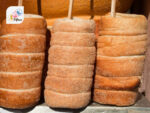


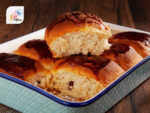



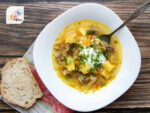
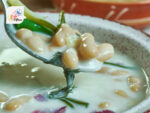
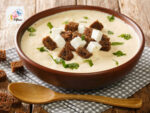

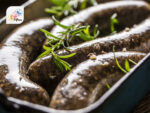
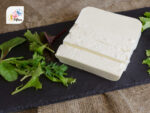
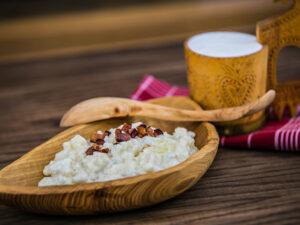
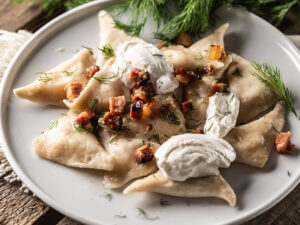
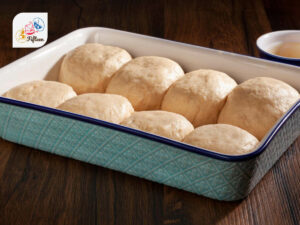
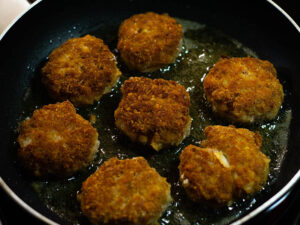
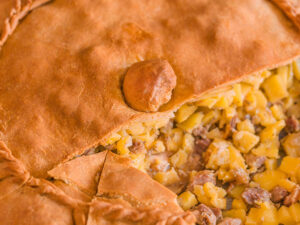
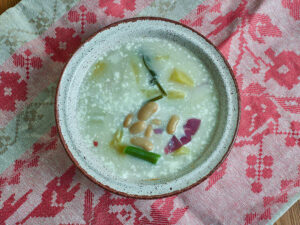
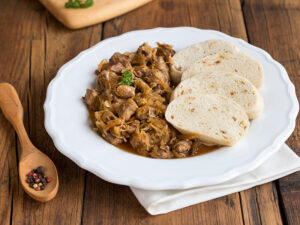
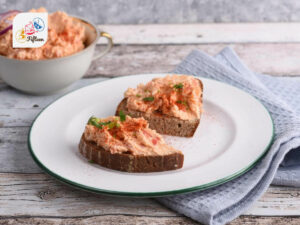
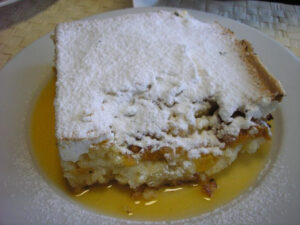
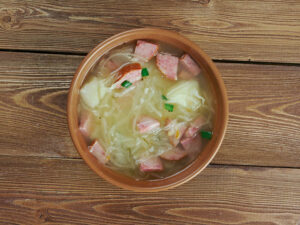
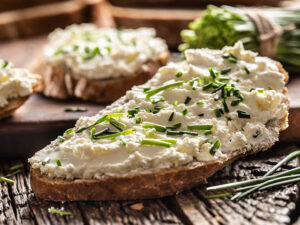
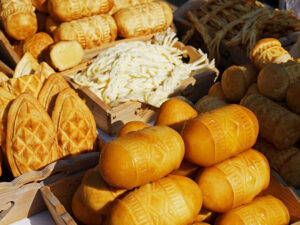

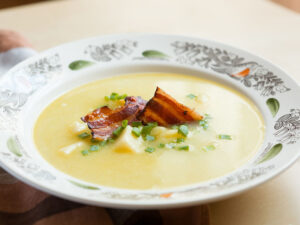


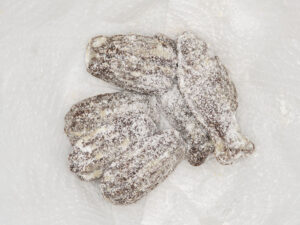
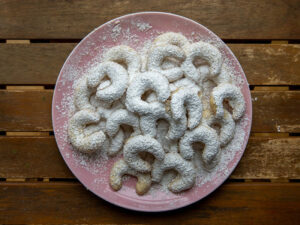
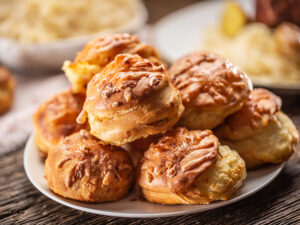
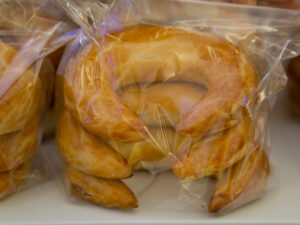
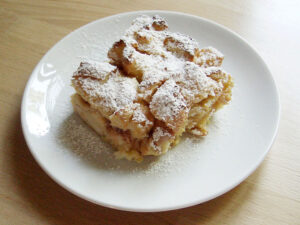
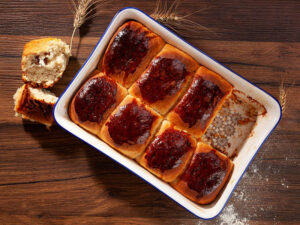
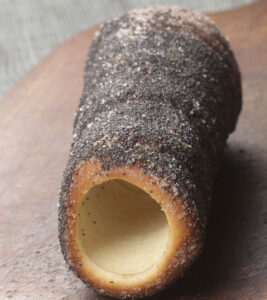
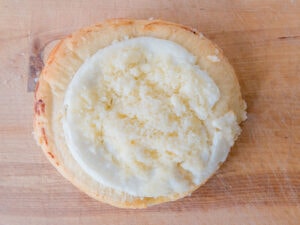
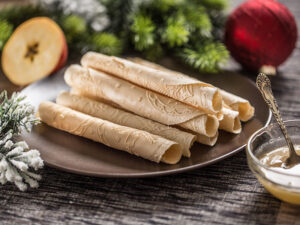
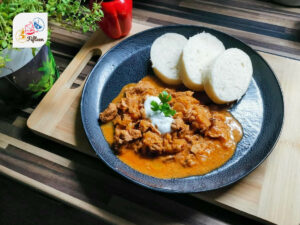
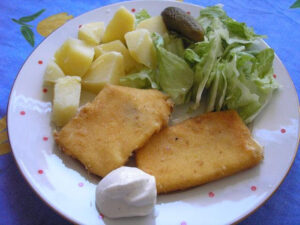
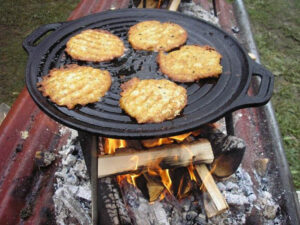
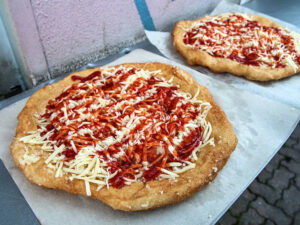
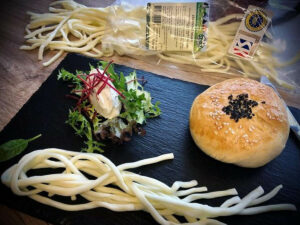
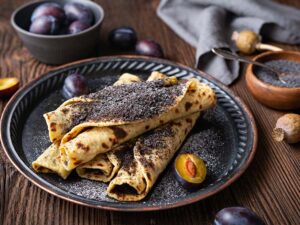

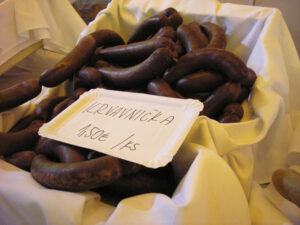
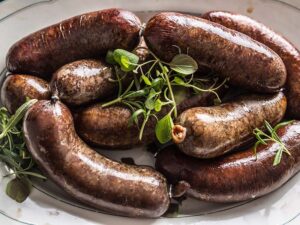
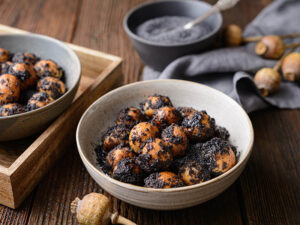
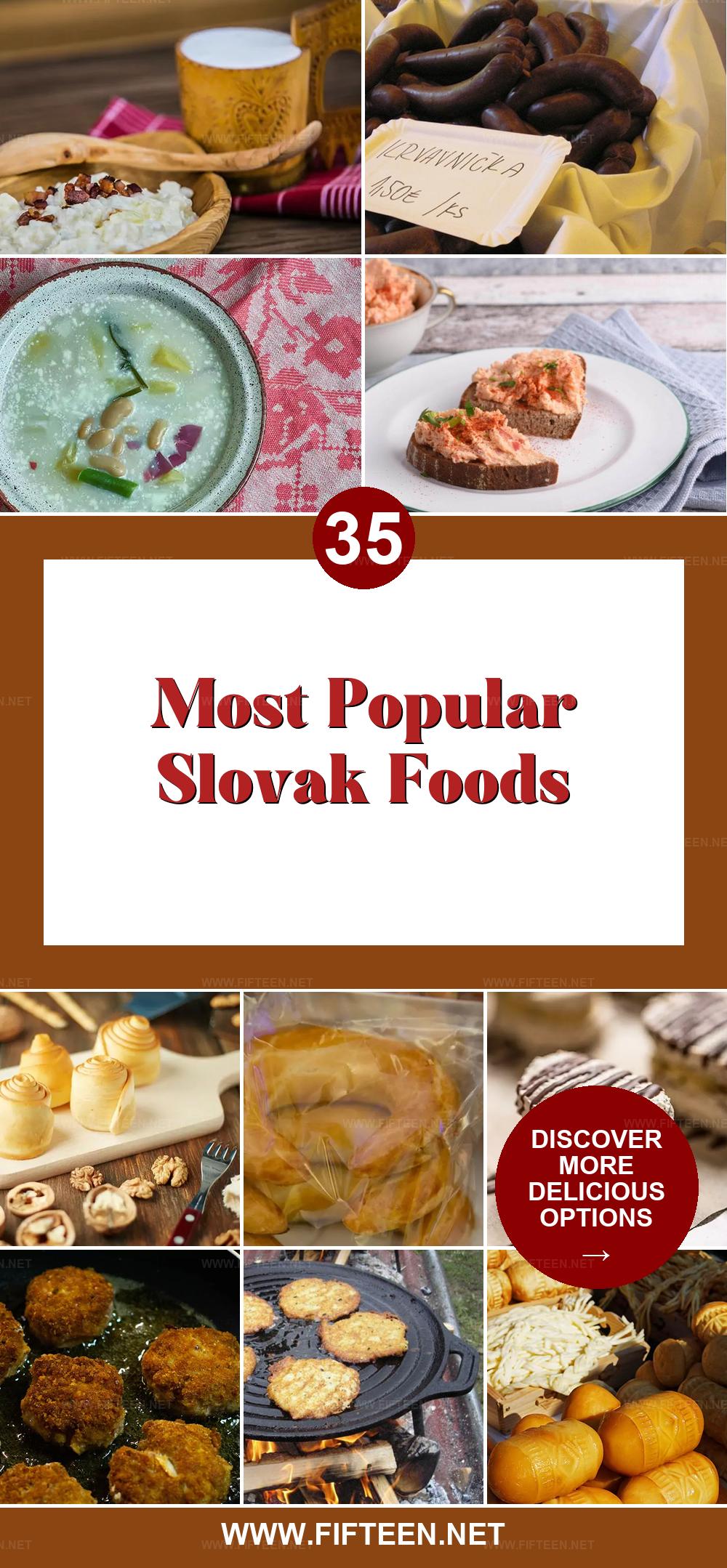
Jamie Scott
Editor in Chief, Senior Content Writer
Expertise
Home Cooking, Meal Planning, Recipe Development, Baking and Pastry, Food Editor, Cooking-video Maker, Western Food Evaluation Expert
Education
Le Cordon Bleu College of Culinary Arts
Local Community College, New York, NY
Jamie Scott is a skilled culinary expert and content creator specializing in Western cuisine. With over 15 years in the culinary field and formal training from Le Cordon Bleu, Paris, Jamie deeply understands how to blend nutrition with delicious flavors. His passion for cooking matches his commitment to making healthy eating accessible and enjoyable.
On Fifteen.net, Jamie brings a fresh perspective to classic dishes and beverages, offering readers insightful recipes, cooking tips, and a fresh view on meal planning that emphasizes taste, health, and simplicity.